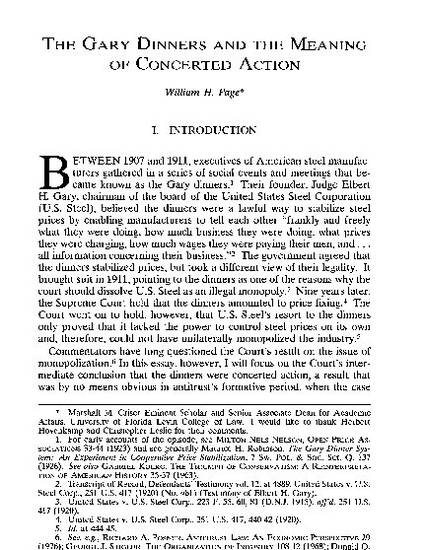
Between 1907 and 1911, executives of American steel manufacturers gathered in a series of social events and meetings that became known as the Gary dinners. Their founder, Judge Elbert H. Gary, chairman of the board of the United States Steel Corporation (U.S. Steel), believed the dinners were a lawful way to stabilize steel prices by enabling manufacturers to tell each other "frankly and freely what they were doing, how much business they were doing, what prices they were charging, how much wages they were paying their men, and... all information concerning their business." The government agreed that the dinners stabilized prices, but took a different view of their legality. It brought suit in 1911, pointing to the dinners as one of the reasons why the court should dissolve U.S. Steel as an illegal monopoly. Nine years later, the Supreme Court held that the dinners amounted to price fixing. The Court went on to hold, however, that U.S. Steel's resort to the dinners only proved that it lacked the power to control steel prices on its own and, therefore, could not have unilaterally monopolized the industry.
Commentators have long questioned the Court's result on the issue of monopolization. This essay, however, will focus on the Court's intermediate conclusion that the dinners were concerted action, a result that was by no means obvious in antitrust's formative period, when the case was decided. I argue that the reasoning that led to this conclusion, especially by the trial judges in the case, can still shed light on the agreement element of section 1 of the Sherman Act.

A part of a symposium, Evolution and Change in Antitrust Law.